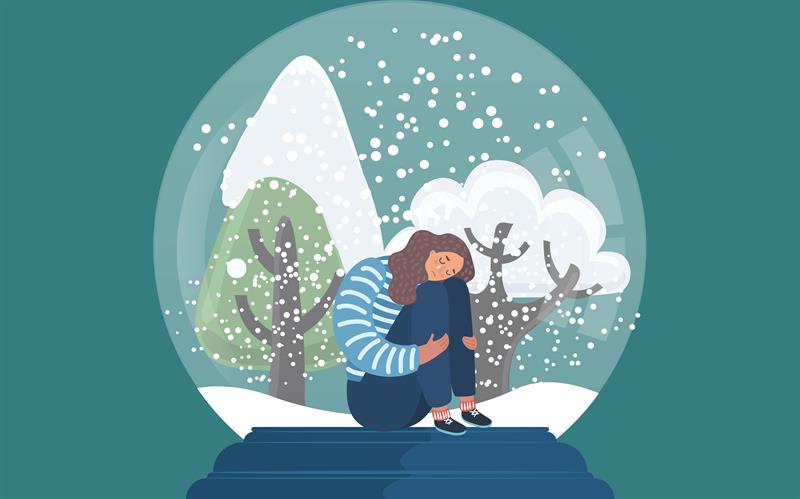Understanding Light Therapy: A Bright Approach to Depression
September 24, 2025
Written by Kevin Marra, MD, Director of Medical Services
The Benefits of Sun for Mental Health
Sunlight plays a critical role in regulating our mood and mental health by helping the brain produce serotonin, a neurotransmitter linked to feelings of well-being and happiness. It also influences melatonin production, which supports healthy sleep cycles, and helps synchronize our circadian rhythm. Research has shown that people with higher daily sunlight exposure report lower rates of depression and anxiety symptoms1.
Seasonal Affective Disorder
Without daily sunlight exposure, people may be subject to Seasonal Affective Disorder (SAD), or seasonal depression. The prevalence of SAD increases at higher latitudes, with SAD being more common in people living far from the equator where there are fewer daylight hours in the winter2. Factors such as reduced outdoor exposure, darker mornings, and disruption of circadian rhythms can all contribute to the onset of SAD, particularly for individuals who work indoors or struggle to maintain consistent sleep patterns during the shorter days of fall and winter.

SAD affects about 5% of the U.S. population each year. In North Carolina, approximately 4.7% of the population may experience SAD. It is more common in women than in men and typically begins in adulthood, most often between the ages of 18 and 302. Common symptoms of SAD include persistent low mood, loss of interest in activities that were once enjoyed, low energy, changes in appetite (often craving sweets or carbohydrates), difficulty concentrating, and changes in sleep patterns.
Clients often begin to see symptoms of SAD as early as August, when the days begin to noticeably shorten. As a psychiatrist, I typically recommend adjusting a client’s treatment plan about a month before Daylight Saving Time ends to proactively manage symptoms prior to the onset of winter. For some individuals, this may involve modifying their treatment plan by adjusting medications. For others, we may introduce Light Therapy as a preventive and therapeutic tool.
What is Light Therapy?
Light Therapy has been studied for seasonal depression since the early 1980s, when researchers at the National Institute of Mental Health first demonstrated its effectiveness3. The concept emerged from observations that increasing light exposure could improve mood in people whose depression followed a seasonal pattern.
Light Therapy is a non-invasive, medication-free treatment that has been shown in over 100 clinical trials to be an effective intervention for SAD. This therapy works by helping to regulate the body’s circadian rhythm, and by stimulating the production of neurotransmitters such as serotonin, dopamine, and melatonin.
By mimicking natural light, Light Therapy helps to reset the biological signals that may be dysregulated in the darker months, reducing the symptoms of SAD and improving overall mood.
Tips for Practicing Light Therapy
Who Can Benefit?
Although Light Therapy is medication-free, it’s important to consult with a doctor before beginning treatment. Certain diagnoses, such as bipolar disorder, can be exasperated by Light Therapy, so professional guidance is essential.
That said, many people with a range of conditions can benefit from this approach. While it is most commonly associated with treating SAD, research has shown it may also be helpful for ADHD, bulimia nervosa, dementia, and Parkinson’s disease, as well as circadian rhythm disorders such as shift work, jet lag, and delayed sleep phase disorder4.
Duration
In my experience, most clients benefit from 30 to 60 minutes of daily Light Therapy. However, this can range. Those with milder symptoms may only need 15 minutes.
Time of Day
The “sweet spot” for Light Therapy is between 5:00 and 8:00 a.m., ideally simulating early morning light. For best results, Light Therapy should be practiced at the same time each day. Morning people may benefit from starting closer to 5:00 a.m., while those who prefer to stay up late might find beginning at 7:00 or 8:00 a.m. more effective. If early morning isn’t feasible, Light Therapy can still be beneficial if used before 2:00 p.m. Using it later in the day may disrupt sleep and shift the body’s clock in the wrong direction.
As fall approaches, now is the time to begin thinking proactively about how the seasons impact your mental health. Light Therapy offers a safe, evidence-based way to reduce symptoms of SAD and improve overall well-being. Whether used on its own or in combination with other treatments, it can make a meaningful difference in quality of life during the darker winter months.
References:
1. Wirz-Justice, A. (2003, December). Chronobiology and mood disorders. Dialogues in Clinical Neuroscience, 5(4), 315–325. https://doi.org/10.31887/DCNS.2003.5.4/awirzjustice
2. American Psychiatric Association. (n.d.). Seasonal affective disorder. https://www.psychiatry.org/patients-families/seasonal-affective-disorder
3. Rosenthal, N. E., Sack, D. A., Gillin, J. C., Lewy, A. J., Goodwin, F. K., Davenport, Y., Mueller, P. S., Newsome, D. A., & Wehr, T. A. (1984, January). Seasonal affective disorder: A description of the syndrome and preliminary findings with light therapy. Archives of General Psychiatry, 41(1), 72–80. https://doi.org/10.1001/archpsyc.1984.01790120076010
4. Botanov, Y., & Ilardi, S. S. (2013). The acute side effects of bright light therapy: A placebo-controlled investigation. PLOS ONE, 8(11), e75893. https://doi.org/10.1371/journal.pone.0075893
5. The Carlat Report. (2023, November 6). The Carlat Report. https://www.thecarlatreport.com/articles/4415-how-to-advise-clients-about-light-therapy
Learn More About HopeWay’s Integrative Therapies
